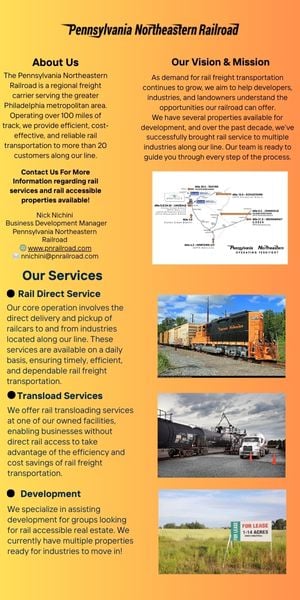Measuring the Impact of Smart Building Technology Investments

A new ratings system quantifies how effective they are across several important criteria.
Investing in smart building technology may not be seen as a priority after commercial real estate investments were hit especially hard in 2020. However, if improving tenant experience was being considered before the pandemic, it’s now an imperative.
Why should commercial real estate owners consider investing in smart building technology upgrades? Based on research and industry analysis, fully integrated smart systems can increase building efficiency, optimize facility operations, improve occupant safety, security and wellbeing, and enhance end-user preferences. And, in light of the pandemic, stakeholders — commercial real estate companies, building owners, managers and tenants — should examine the competitive advantages of smart building technology.
The SPIRE Smart Building Program
For many building owners, a critical concern has been the ability to measure the effectiveness of smart building technology. A new program could help them achieve that.
In September 2020, the Telecommunications Industry Association (TIA) and UL, a safety science company, launched the SPIRE Smart Building Program. Developed in partnership with TIA’s Smart Building Working Group, it is the world’s first comprehensive, objective assessment and rating program for smart buildings.
SPIRE provides an assessment of connected technologies within buildings, delivering insights, benchmarks and roadmaps to help lower costs, mitigate risks, create brand differentiation and enhance overall asset value.
There are two components to the SPIRE program: the online SPIRE Self-Assessment, which allows a building owner or manager to self-assess their property to identify areas of strength and weakness, and the UL Verified Assessment and Rating, coming in early 2021, which is based on an in-depth audit conducted by UL. A successful verified assessment results in a UL Verified Mark, a plaque and a building performance score. Both the online self-assessment and the verified assessment are based on the same six categories of criteria.
The assessment criteria are industry-defined to ensure neutrality and transparency. They were developed with the input of more than 60 commercial real estate, asset management and technology industry leaders who participate in the TIA Smart Buildings Working Group. The six criteria categories they defined form the basis of the SPIRE Smart Building Program for assessing and rating smart buildings: Connectivity, Health and Wellbeing, Sustainability, Life and Property Safety, Cybersecurity, and Power and Energy.
The six categories, when combined in an assessment, give owners a 360-degree view of what’s happening throughout their building and allows them to investigate what is impacting the overall performance levels.
To put it into context, consider that while the use of sensors to monitor potable water usage certainly contributes to sustainability, it is also critical to monitoring the quality of the water for the health and wellbeing of building occupants. This in turn requires reliable connectivity to transmit and share the data from monitoring systems, while integrating with other systems that can use that information to optimize power and energy usage. These emerging sensor and monitoring technologies also drive the need for cybersecurity measures to protect the information as it transmits between systems, while the water system itself must be protected to ensure both life and property safety. Only when all six criteria are considered together, as part of a holistic assessment, can smart buildings reveal truly outstanding, measurable outcomes.
“The integration of all building systems is now technically possible and is becoming a necessity for success in a very competitive market,” said David Stehlin, CEO of TIA. “Fully integrated systems are enabling advanced building automation that helps increase efficiency, optimize operations and enhance overall occupant productivity and wellbeing. By assessing, validating and rating key building elements that take into consideration the entirety of a smart building, SPIRE can simultaneously help improve asset performance, ROI and tenant relations.”
The COVID-19 Effect
The SPIRE Smart Building Program comes as the commercial real estate industry grapples with the unparalleled impact of COVID-19 on building assets.
For example, Cushman & Wakefield calculated a net absorption for office space of -43 million square feet in the fourth quarter of 2020, with a vacancy rate of 15.5%. Retail properties had a net absorption of -13.6 million square feet and a vacancy rate of 7.1% in the third quarter of 2020 (the most recent period for which data is available). Meanwhile, analysts expect continued instability into at least the first half of 2021 as vacancy rates continue to rise for most property types.
Due to the pandemic, a better understanding of operations efficiency, overall costs and risk mitigation within their building portfolios is a critical consideration for commercial real estate companies, building owners, managers and tenants to keep their properties efficient and competitive. Additionally, Deloitte’s 2021 Commercial Real Estate Outlook suggests that in the future, the presence of health- and safety-related smart building features may eclipse a building’s location when comparing leasing options. The pandemic revealed a higher priority for embedded technologies to protect individual health and safety.
“In these unprecedented times, those overseeing smart building assets are looking for guidance to help better align performance strategies, planning tactics and operational efficiencies,” said Rachna Stegall, vice president and SPIRE Smart Building Program lead at UL. “The SPIRE Smart Building Program does just that by providing insight to smart building technologies and outcomes while helping to empower informed investment decisions about where to focus technology, building enhancements and business optimizations.”
Building for the Future
According to the public benefit corporation NYSERDA, for companies looking beyond the current crisis, smart technology investments can help buildings perform better, increase profitability and save up to 15% in annual energy costs by addressing common sources of energy waste such as systems running in unoccupied buildings and optimizing lighting.
Marta Soncodi is the smart buildings technology program director for the Telecommunications Industry Association.








